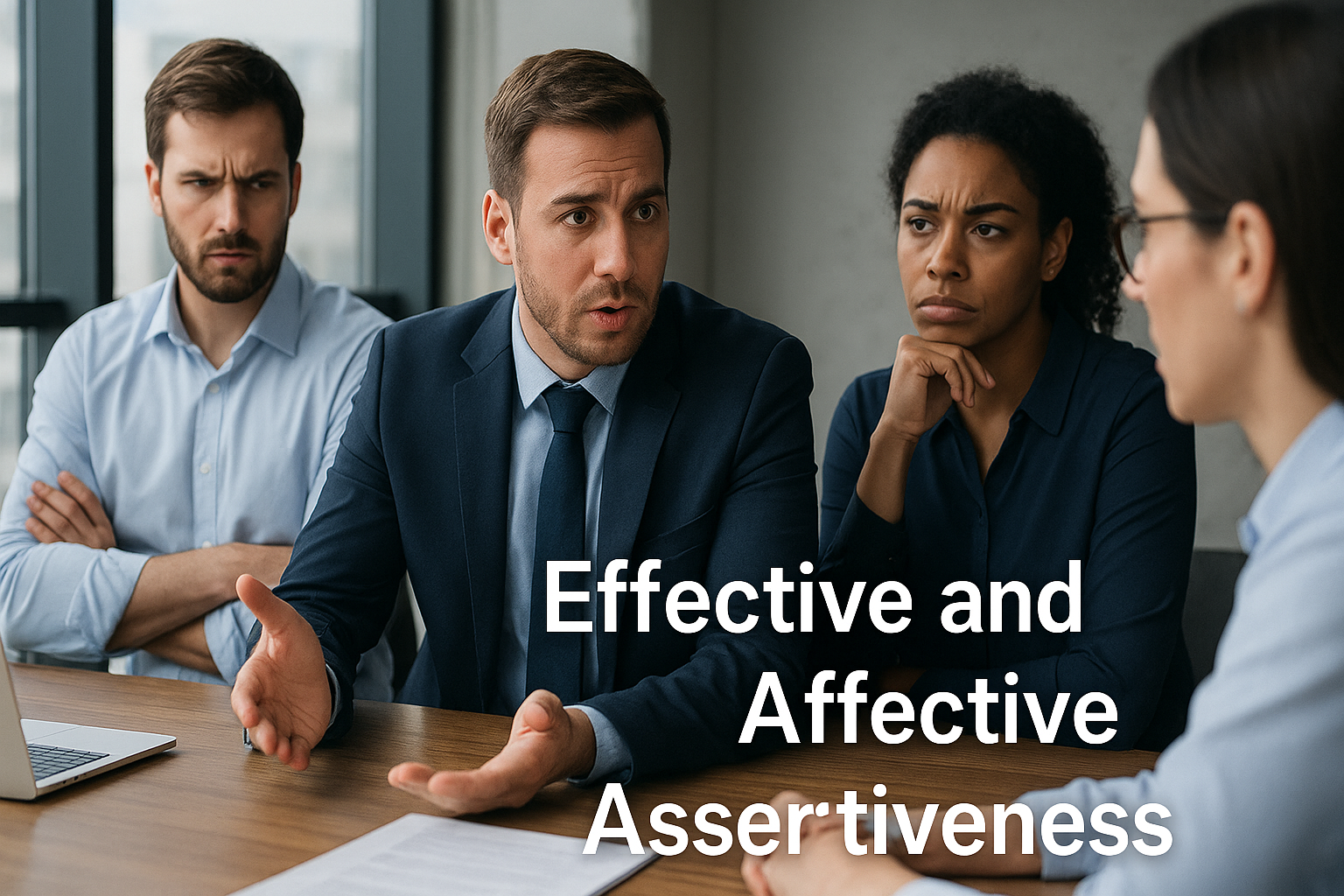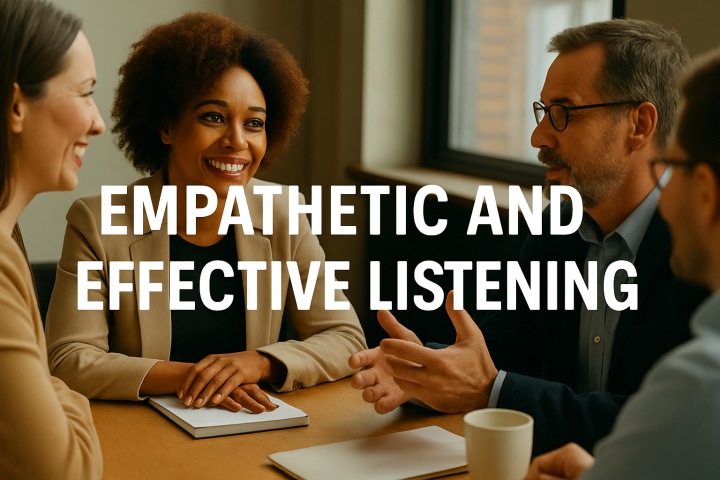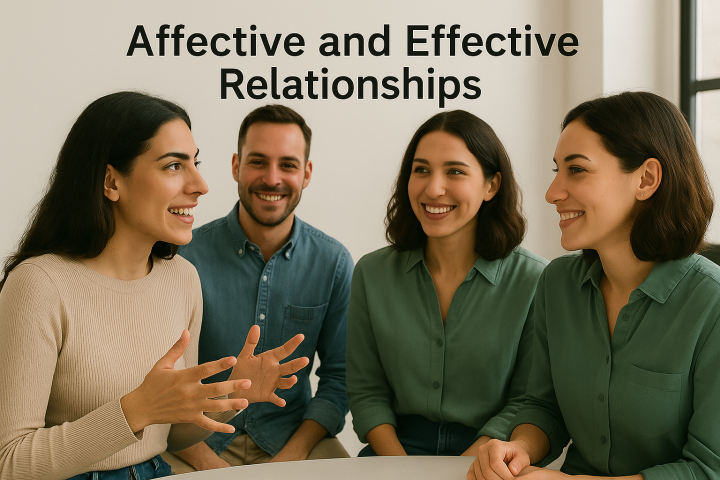INTEGRITY BUSINESS SERVICES
Capsule of the Week
Affective and Effective Acceptance
Hello Team,
I would like to begin with something that might be happening this week in many workplaces. It's Monday morning. The team meeting has already started. It’s 9:12 and Martin walks into the room with his phone in one hand and a coffee in the other. He quickly sits down and, with a forced smile, says:
— “Sorry, there was terrible traffic. You know how this city gets…”
The others barely look at him. One of them, Laura, nods silently. But inside, she thinks:
“He’s always late. He doesn’t even bother with a believable excuse anymore. And of course, no one says anything. But if I did that, they’d already be judging me.”
Although Laura doesn’t express it, that inner voice starts to affect her tone, facial expression, and how she responds to Martin’s comments during the meeting. What began as a silent annoyance gradually becomes tension, ironic passivity, and distance.
Martin notices it… but doesn’t understand why.
This is a classic example of what Chris Argyris called the left-hand column: that parallel conversation we don’t say out loud, but that contaminates everything.
And what’s at stake here is not just punctuality or the excuse… but the way we manage unexpressed emotions, silent judgments, and our ability (or inability) to speak with clarity and respect.
This is where assertiveness comes in.
What does it mean to be assertive?
Assertiveness is one of the most valuable skills in professional life—and also one of the least consciously and correctly practiced.
“If you truly want to be happy, don’t be aggressive, be assertive.”
– Jean Bauer
Being assertive means expressing what you think, feel, and need in a clear, direct, and respectful way. It’s being able to say “no” without guilt, but with a valid explanation.
It’s setting boundaries without being aggressive, and also knowing how to listen without giving in—without silencing what matters.
But beyond the technical definition, the kind of assertiveness that transforms is not only effective, but also affective. In other words: it achieves results without losing human connection.
This entire reflection shows us that assertiveness, more than a technique, is an art.
What you don’t say also communicates
Let’s go back to Martin and Laura’s case.
Laura’s discomfort is not the problem. We all feel things we don’t say, and there are things that, if we said them, would become “brutal honesty.”
The problem is not knowing how to communicate what we feel without harming the relationship—and without staying stuck in a loop of silent resentment.
When we don’t speak from assertiveness, the left-hand column grows, fills with negative thoughts, assumptions, frustrations… and gradually becomes judgment, sarcasm, avoidance, or resentment.
What could have been resolved with a simple:
“Martin, could you try to be on time for the Monday meetings? We lose too much time catching you up and it really bothers the team.”
…depends on whether you say it the first time in private or in front of everyone.
Affective assertiveness is the bridge that brings that internal conversation into the light—without violence, without drama… with clarity and humanity.
Assertiveness + empathy: the perfect balance
Communication is not only verbal. It is also physical, emotional, gestural.
That’s why, when expressing something difficult, it’s not enough to just choose your words carefully. You need to adjust your nonverbal language so the message doesn’t come across as aggressive, passive, or confusing.
Here’s a key principle:
- If your message is strong, firm, or very direct, try to use a soft, calm tone, an empathetic gaze, and an open posture. This will prevent the other person from becoming defensive.
- If your message is gentle or emotional, you might accompany it with a confident posture, clear voice, and steady eye contact. This prevents your message from losing strength or making you seem weak.
This balance between emotional tone and body language is what allows your message to reach the other person without noise, without resistance, without unnecessary pain.
Assertiveness is situational.
The same phrase can be perceived in completely different ways depending on who says it, to whom it’s said, when it’s said, and how it’s said.
To a direct person, saying “I don’t agree” might be seen as something brave.
However, someone very sensitive might perceive the same expression as aggressive. Another person might think you were too soft or ambiguous.
Assertiveness is not a fixed technique; it is contextual and emotional intelligence.
It means knowing how to read the moment, the personality, and the other person’s background.
It’s having the ability to adjust your way of communicating without losing your essence.
Does that require effort? Yes.
Body, word, and context.
To practice effective and affective assertiveness, you need to integrate three elements:
- What you say (verbal language)
Clarity, honesty, respect. No beating around the bush, no attacks. - How you say it (nonverbal language)
Posture, tone, gestures, gaze. The body either validates or contradicts your message. - To whom you say it (context and person)
Personality, emotional state, prior history. What works for one may hurt another.
When these three elements are aligned, you create honest, firm, and human communication.
Challenge of the week.
Over the next few days, I propose a transformative challenge, without using GPT:
Step 1: Identify a pending conversation
Think of a situation where you held back something you didn’t say. Maybe you felt injustice, frustration, or simply discomfort. That’s your “left-hand column.”
Step 2: Write it exactly as you feel it
No filter. Just for you. What did you think, what did you feel, what did you want to say?
Step 3: Rewrite that message in an assertive and empathetic way
Transform that column into a real conversation. Use firm but warm language.
Also prepare your posture, tone, and attitude.
Step 4: Express it or rehearse it
Whether you say it in person or practice it, allow yourself to feel how your body reacts when speaking your truth.
At the end of the week, reflect:
- How did your energy change when you expressed what you thought with respect?
- Was it easier than you expected? What did you learn about yourself?
Adrian Rojas




